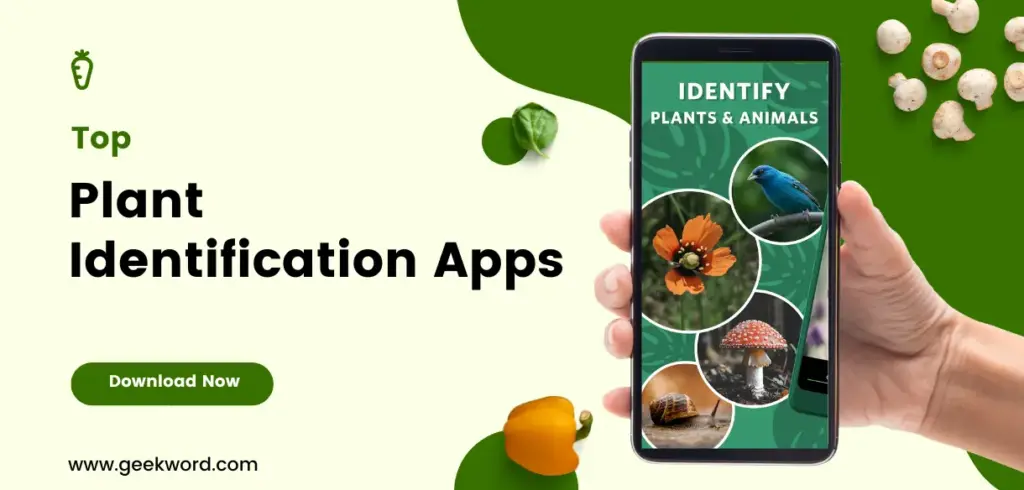Plant identification apps also refer to mobile applications that employ innovative technology to deliver plant determination services. These apps employ aspects like computer vision and machine learning algorithms to interpret the images of plants or even merely the portions of them, such as leaves, flowers, the skin of the trunk, etc. Their software analyzes plant images with a reference database of plant data to accurately identify the plant in question and provide other information. They can feature simple garden plants to discover impressive and unusual cuttings, and these applications have become the key to botanical details. Whether the user is keen on gardening, a lover of all things related to nature, or a curious individual who wants to know more about what grows in one’s vicinity, these are helpful applications.
The 5 Best Plant Identification Apps of 2024
1. PlantSnap
With its many features and popularity over the last few years, PlantSnap is still a perfect plant identification application that is available for download. PlantSnap has been compiled with more than 600,000 plant species, so it can quickly learn plants from different countries with tiny points of error. As for the operation, it is very easy; you can just take a photo of the plant, and the app will present the relevant information about the plant in the form of a common name, scientific name, family status/nickname, features/traits, and environmental and climatic conditions. PlantSnap also contains extra sections, including plant guides and care, a plant locator that lets you explore the place, and a talking section where you can speak with other users about your discoveries.
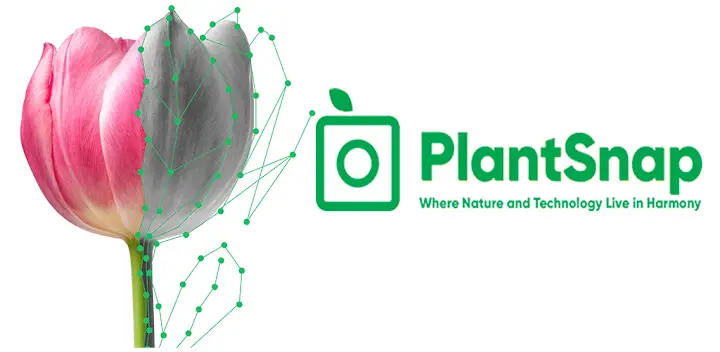
| Attribute | iOS | Android |
| App Name | PlantSnap – identify plants | PlantSnap plant identification |
| Description | Flowers and trees identifier | Identify plants, trees, succulents, mushrooms, and more anywhere in a snap |
| Ratings | 4.6 • 65K Ratings | 3.3 • 94K Reviews |
| Downloads | N/A | 10M+ |
| Content Rating | 4+ | Rated for 3+ |
| Price | Free | Free |
| Ads | No | Yes |
| In-App Purchases | Yes | Yes |
| Download Link | Download for iOS | Download for Android |
2. PictureThis
PictureThis is one of the most helpful plant identification apps I have encountered. Not only does it tell you the name of the plant, but it also takes it a notch higher. Using the forward-thinking AI that the Picture This app can distinguish more than one million different types of plants, trees, mushrooms, and even plant diseases. In this regard, the app has ample information about each plant, from its genesis to how it grows and should be contained or cared for. PictureThis provides augmented reality options that are pretty pronounced and enable a user to understand how a given plant will look under their preferred interior décor or in their garden. This app also has an artificial intelligence system that can suggest favorable conditions to the user and recommend plant species to grow depending on the world’s climatic zones.
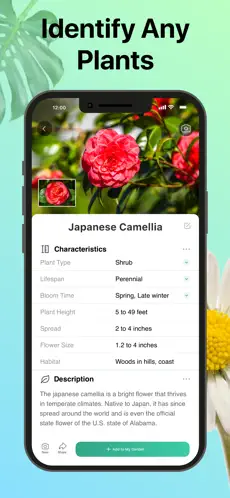
| Attribute | iOS | Android |
| App Name | PictureThis – Plant Identifier | PictureThis – Plant Identifier |
| Developer | Glority Global Group Ltd. | Glority Global Group Ltd. |
| Description | Plant care and identification | Instantly identify plants. Accurate, fast and content rich |
| Ratings | 4.8 • 915.6K Ratings | 4.4 • 573K Reviews |
| Downloads | N/A | 50M+ |
| Content Rating | 4+ | Rated for 3+ |
| Price | Free | Free |
| Ads | No | Yes |
| In-App Purchases | Yes | Yes |
| Download Link | Download for iOS | Download for Android |
3. Seek by iNaturalist
iNaturalist has developed this informative but simple and easy-to-use iPhone and Android application titled Seek—The Plant Recognition App. It is equipped with cutting-edge computer vision and machine learning, allowing extremely accurate identification of plants, animals, and fungi. It hardly took me a few minutes to snap pictures and share them on Seek. It is ideal for those who are not always in the best light or have poor vision, as it offers clear descriptions and locations commonly known as its aspirations, Latin name, and habitat. The centerpiece of Seek is the use of game elements, where users are motivated to search for and photograph different species of plants and animals and upload the results to a worldwide database of public-domain observations of biological diversity.
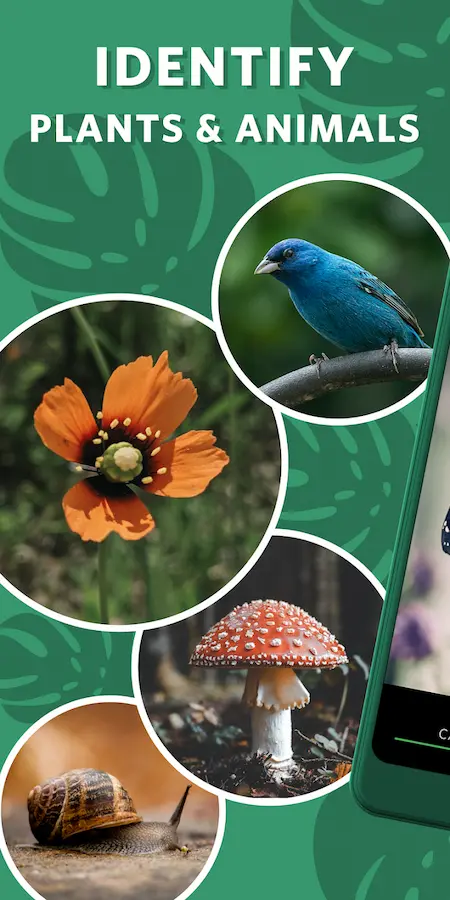
| Attribute | iOS | Android |
| App Name | Seek by iNaturalist | Seek by iNaturalist |
| Developer | iNaturalist, LLC | iNaturalist |
| Description | Identify plants & animals | Use the power of image recognition technology to identify the plants and animals all around you. |
| Ratings | 4.8 • 30K Ratings | 4.3 • 9.29K Reviews |
| Downloads | N/A | 1M+ |
| Content Rating | 4+ | Rated for 3+ |
| Price | Free | Free |
| Ads | No | No |
| In-App Purchases | No | No |
| Download Link | Download for iOS | Download for Android |
4. PlantNet
Researchers and botanists created Plantagenet, a free and scientifically based plant identification application. Having gathered over 20,000 plant species, PlantNet is quite capable of identifying what plants from what parts of the world are like. The app utilizes image recognition technologies to process the samples in terms of the visual peculiarities of the plant, including branches, leaves, flowers, bark, and fruits. PlantNet holds comprehensive data about each of the plants that have been identified; it has information about its classification, distribution, and ecology, among others. The app also goes further to include an interactive map whereby the plants that have been identified are mapped for users, with such an application being practical for a range of individuals such as researchers, students, and nature lovers.

| Attribute | iOS | Android |
| App Name | PlantNet | PlantNet Plant Identification |
| Developer | Cirad-France | PlantNet |
| Description | Plant Identification | Pl@ntNet is an application that allows you to identify plants simply by photographing them with your smartphone. |
| Ratings | 4.6 • 4.8K Ratings | 4.2 • 240K Reviews |
| Downloads | N/A | 10M+ |
| Content Rating | 4+ | Rated for 3+ |
| Price | Free | Free |
| Ads | No | No |
| In-App Purchases | No | No |
| Download Link | Download for iOS | Download for Android |
5. LeafSnap
As for the idea of the application, LeafSnap is a remarkable and rather unconventional plant identification application that addresses the problem of identifying plants using only leaf samples. Coded by researchers from Columbia University, the University of Maryland, and the Smithsonian Institution, this application enables the identification of plants through the analysis of images of leaves using computer vision and machine learning tools. Some benefits include the following:
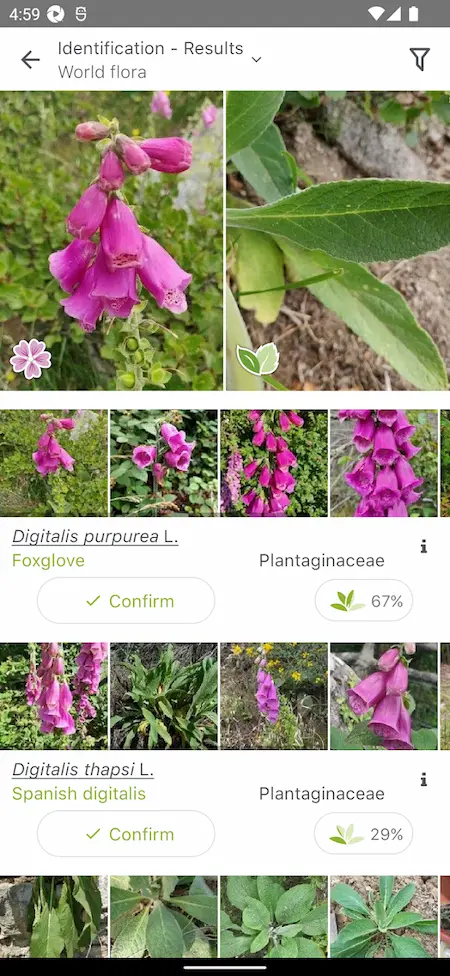
The app has an easy user interface. The user can select a leaf photo, and the app will determine the correct name of the plant species and other related information. As a tree identification app, LeafSnap is especially beneficial for users focused on tree and woody plant identification, including arborists, horticulturists, other associated professionals, and avid tree enthusiasts.
| Attribute | iOS | Android |
| App Name | LeafSnap-Plant Identification | LeafSnap Plant Identification |
| Developer | APPIXI COMPANY LIMITED | Appixi |
| Description | Plant Identification & Care | When you discover a beautiful wildflower or unusual-looking shrub, you struggle to discern its genus. |
| Ratings | 4.3 • 2K Ratings | 3.6 • 13.4K Reviews |
| Downloads | N/A | 10M+ |
| Content Rating | 4+ | Rated for 3+ |
| Price | Free | Free |
| Ads | No | Yes |
| In-App Purchases | Yes | Yes |
| Download Link | Download for iOS | Download for Android |
How do plant identification apps work?
The Plant Identification App operates on the commercial use of technology, mainly comprised of vision systems and learned algorithms. The process typically involves the following steps: The process typically involves the following steps:
- Image Capture: Users take pictures of the plant or some particular part of it, like a leaf, full-bloomed flower, or the bark, using the built-in camera of their smartphone.
- Image Processing: When an image is captured, the app automatically pre-processes it and interprets visual cues, including color, texture, shapes, and patterns.
- Feature Extraction: Another step involves employing sophisticated quantitative methods that compare the extracted features with a large image and other characteristics of the plants.
- Machine Learning: Elaborate algorithms work on a series of plants, using large amounts of data to train advanced machine learning algorithms to match the pictures with the information in the database.
- Identification: Where applicable from the analysis and pattern matching, the app also offers the best guess at the plant’s species to which the photo submitted belongs, including its commercial and binomial name; other details such as characteristics, habitat, and distribution may also be offered.
Additional information sources, some of which may be obtained from the application’s users, such as geographic location, typed or voice input and output, and crowdsourced information, may also be included in the apps to improve identification accuracy.
Why are plant identification apps so popular?
Plant identification apps have gained immense popularity for several reasons:
- Accessibility: The benefits of such apps include the fact that they are very effective if you want to learn about plants and have no experience because these applications contain countless pieces of botanical information.
- Convenience: Often, users lug around encyclopedias like field guides or get identification help from skilled individuals, whereas, with this application, all they need to do is take an image to get identification on their phones.
- Educational Value: Plant Identification Apps are essentially an added advantage, given that they help educate people on the existence, importance, and needs of plants around them.
- Environmental Awareness: Since some of the plant recognition features help improve appreciation of the numerous and diverse plant species, such applications further the cause of plant conservation and promote sustainable practices.
- Community Engagement: Almost all apps have social options where users can share what they find or where they want recommendations. Often, the users are compiling the databases. All this contributes to the app’s community, which includes nature enthusiasts.
- Practical Applications: Plant identification is helpful in several activities, including gardening, landscaping, farming, and even research. Plant identification apps are very useful for professional use and individual interest.
Future of Plant Identification Apps
The future of plant identification apps is promising since new technological improvements will enhance the applicability of such applications, and more people will develop an interest in the environment. Here are some potential developments:
- Expanded Databases: Thanks to the continuous collection and dissemination of more plant data, the databases underlie these apps, which will continue to widen their coverage and add new species data from various parts of the world.
- Improved Accuracy: With new developments in computer vision, machine learning, and data collected from crowdsourced services, the chances of mistakes or misidentification using plant identification technologies will continue to be reduced.
- Enhanced Functionality: Subsequent apps will likely employ augmented reality overlays for plant identification, interactive plant finder aids, and user preference and localization algorithms.
- Integration with IoT and Smart Devices: Regarding advanced possibilities, plant identification apps may include control connections with Internet of Things (IoT) devices and smart home systems to monitor plants, offer care advice, and even automatically offer gardening solutions.
- Collaborative Platforms: Such platforms may transition into collaborative apps for sharing and exchanging knowledge, crowdsourcing or citizen science projects, and other conservation or research projects worldwide.
Trends and Business Opportunities
The growing popularity of plant identification apps presents several trends and business opportunities:
- Personalized Plant Care Services: It might be possible to sell plant care services in which apps suggest the proper care and ways to control pests appropriate for the type of plant and the user’s climate.
- E-commerce Integration: Applications could also link with online stores so users can buy plants, seeds, and tools or even find professional gardeners to attend to their gardens within the application.
- Subscription Models: Subscription services could offer additional options or enhanced tools, such as a refined reporting system, BI tools, or deeper access to other plant databases, and provide lock-in, consistent cash flows.
- Targeted Advertising: Given this data regarding the usage and geographical distribution of such plants, apps can potentially provide advertising options for plant-growing businesses such as nurseries, landscaping companies, or gardening equipment manufacturers.
- Data Monetization: The sheer volume of plant data gathered through such apps could benefit research institutions, conservation groups, or agribusiness firms, making data monetization a significant possibility.
- Partnerships and Collaborations: They could affiliate with botanical gardens, educational institutions, or environmental conservation organizations to improve the services offered in the apps and create a larger market to sell the idea to.
Conclusion
Plant identification applications provide people with convenient and efficient ways to access information about the various plants. In the context of this constantly developing world of information technology, they become helpful sources that allow a person to expand their knowledge of the topic. These apps are of great value for anyone interested in space conservation, from amateur to expert. We have already noted improvements with time, and with the continued growth in technology capabilities, one can only imagine the further improvement in plant identification. Enhance your appreciation of plant diversity by getting one of these remarkable applications and starting to explore, learn, and protect plants. This is made possible by the technology that enables you to identify all kinds of plants.

